Marines under fire for flying $80M F-35 over SC during thunderstorm when report shows jets CAN’T handle storms: Pilot ejected due to ‘bad weather’ before jet ‘flipped’, flew 100ft above trees in ‘zombie mode’ and crashed in field
An F-35 jet may have crashed due to bad weather in South Carolina on Sunday, new audio suggests – as questions mount over why the disastrous training exercise was allowed to continue .
The F-35B Lightning II that the unnamed Marine pilot was flying could fail if flown in thunderstorms, according to a Forbes survey in November.
Its sister plane, the F-35A, is more seriously affected and cannot fly within 25 miles of the lightning strike.
The problem lies with the F-35’s Onboard Inert Gas Generation (OBIGGS) system, which pumps nitrogen-enriched air into its fuel tanks to inert them, preventing the plane from exploding if hit by lightning.
“The F-35B and C variants have some of the same OBIGGS issues as the F-35A, but have been able to mitigate operational impacts,” said Chief Petty Officer Matthew Olay, spokesperson for the F-35 Joint Program Office, in an email. at Forbes last year.
Audio from Sunday’s crash shows the pilot telling rescuers, after ejecting, that he “lost it to the weather.”
The scorched earth of the crashed fighter jet is visible in South Carolina on Monday
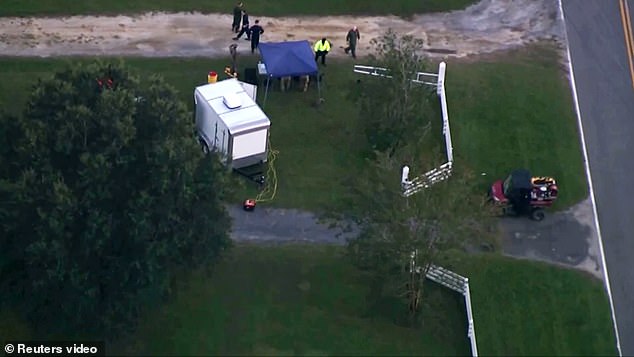
The F-35 crashed only about 80 miles from its base, north of Charleston, South Carolina.
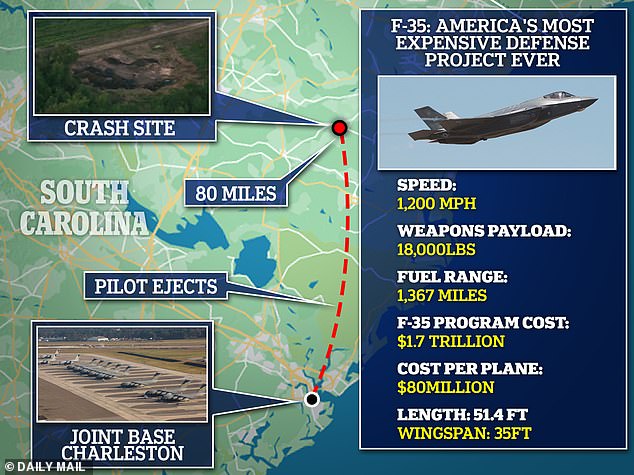
It took off Sunday, flying in tandem with another F-35 from Charleston Air Force Base in South Carolina, and ejected to a height of 1,000 feet, just shy of the height of the Empire State Building.
It was only about a mile north of Charleston International Airport, in a populated area that led the pilot to parachute into a residential yard.
A call for help was made on Sunday at 1:42 p.m.
An audio recording, kept by Charleston County Emergency Medical Services, shows a man telling someone on the phone: “He doesn’t know where his plane crashed, he said he just flew it lose due to bad weather.”
The plane was on autopilot at the time, said Jeremy Huggins, a spokesman for Joint Base Charleston, speaking to NBC News.
Separate audio, obtained by aviation enthusiast @aeroscouting, appears to show air traffic control towers in the area attempting to make contact with the unmanned aircraft. The “zombie jet” would be the SWEDE-11 in conversation.
Air traffic control tries to talk to SWEDE-12, the wingman, and tells him that he has lost contact with SWEDE-11.
“SWEDE-12, do you have external communications with your wingman – he’s not on… frequencies,” the ATC official said.
ATC tells the pilot of the SWEDE-12 tandem plane that he will report his colleague as “NORDO” – flying without a radio.
The missing plane traveled about 60 miles before crashing near Bartell Crossroads, in a rural area with well-tended agricultural fields.
A South Carolina couple told NBC News that they saw the plane flying “almost upside down” above them.
“Our kids always wave to us a little bit, so we told them, ‘Look at the plane. “Oh my God, it’s so low,” Adrian Truluck said.
“And it was probably 100 feet above the treetops, and almost upside down.”
Added her husband, Stephen Truluck, “It was probably three-quarters of the way,” she turned around.
“We could see the glass roof. »
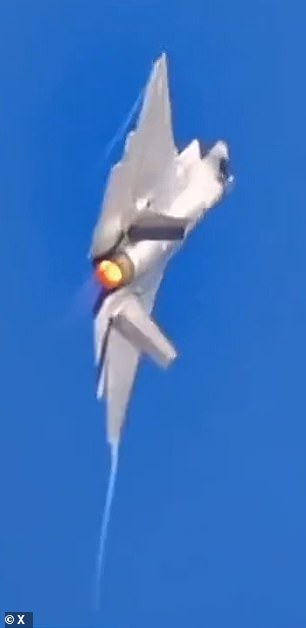
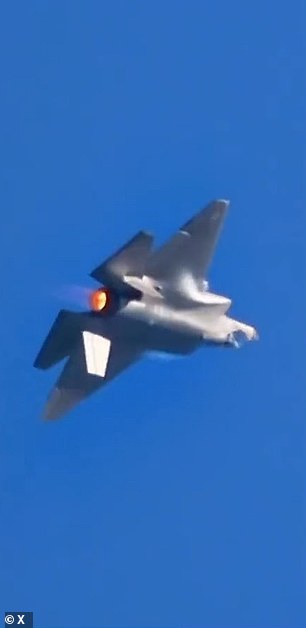
Archive footage shows F-35 flying at terrifying angle
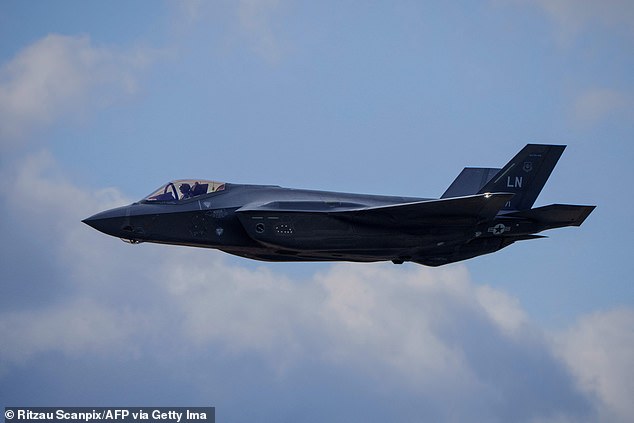
A Marine Corps pilot ejected safely from an F-35 Lightning II jet over North Charleston on Sunday, but his plane was not located until Monday afternoon.

Marines failed to locate the crashed plane for 28 hours, leading to a humiliating appeal on social media for help finding the missing plane, worth 80 million dollars.
Richard Aboulafia, an aviation expert, said The New York Post the pilot was likely flying the stealth fighter without any tracking capabilities enabled, hampering the search.
“If you turned on the onboard device, it would be easily traceable,” he said.
“But this is a stealth plane. If you don’t turn on this particular device, it will be difficult to establish contact. Most likely, it didn’t have much time to react.
Once the wreckage was located, a Marine Corps team was dispatched to secure the wreckage and a second team, responsible for investigating plane crashes, was sent to the scene.
But questions now arise about why it was allowed to fly, given the proximity of the storms and concerns about its sister planes.
The National Weather Service issued a “special weather statement” for the Charleston area, warning of winds of 55 mph.
They also warned of thunderstorms, heavy rain and “isolated tornadoes.” Indeed, radar images from Sunday around 2 p.m. show thunderstorms throughout the region.
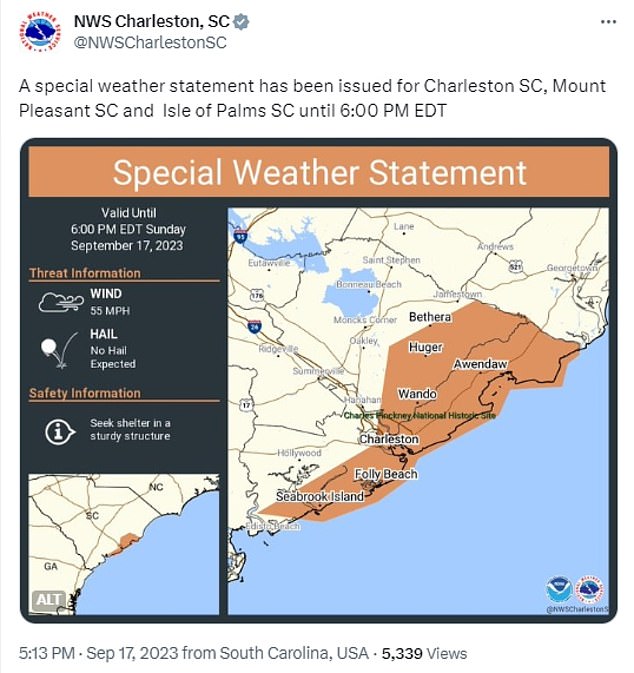
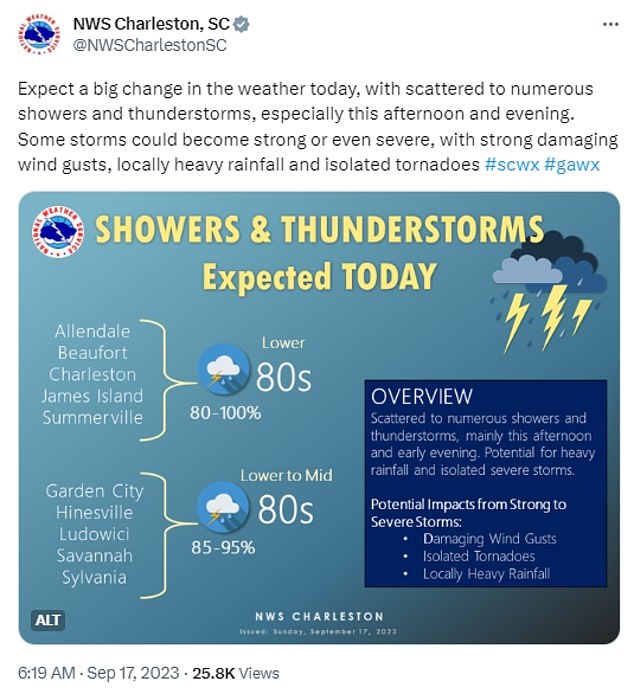
The Marines have not commented on the causes of this “accident”, nor the ongoing investigation.
The pilot who ejected has since been released from hospital.
The Marine Corps announced a so-called “safety shutdown”: the immobilization of its fleet for two days.
The move is intended to “ensure the service maintains operational standardization of combat-ready aircraft with well-prepared pilots and crews,” the Marines said.
Sunday’s crash is the third major Navy aircraft incident to occur in the past six weeks.
In August, three U.S. Marines were killed when a V-22B Osprey tilt-rotor plane crashed during a training exercise in Australia.
Shortly afterward, a Marine Corps pilot was killed when his fighter jet crashed near a San Diego base during a training flight.
The jet is part of the U.S. Department of Defense’s most expensive weapons systems program, according to a May 2023 report from the U.S. Government Accountability Office.
The Department of Defense is evaluating its options for upgrading the engine, according to the report, and the “overloaded” cooling system requires the engine to operate “beyond its design parameters.”
“The additional heat increases engine wear, reduces engine life, and adds $38 billion in maintenance costs,” the report states.
Former Marine Dan Grazier, who works for a defense watchdog and has warned about F-35 security problems for years, said a software glitch or cyberattack could have caused the device to malfunction. the missing plane.
He told DailyMail.com: “There are thousands of penetration points, weaknesses throughout the business, where a hacker could access the software.”
